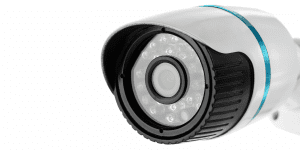
Should you choose Composite Video Interface (CVI) security cameras or IP security cameras?
As you continue searching for the best security cameras for your small business, you’ll have another important decision to make. Namely, should you choose Composite Video Interface (CVI) security cameras or IP security cameras? If you are unfamiliar with these technologies, you might wonder what the difference is between them. Fortunately, we have assembled this guide detailing all sorts of pertinent information for your consideration, along with the pros and cons of both surveillance systems.
CVI Security Cameras
Composite Video Interface, or CVI, cameras are a relatively new technology. Consequently, these cameras might not be as well-known as their analog or IP counterparts. These cameras are simplistic and easy to install and handle, providing a good setup for a consumer or user who is new to using security cameras or surveillance systems in general. A CVI security camera combines the perks and benefits of both IP and analog cameras into one unit. Like an IP security camera, a CVI security camera can still provide high definition footage. However, unlike IP cameras, CVI cameras only need a coaxial cable with a power connector. This setup is less expensive than the Cat5e or Cat6 cabling needed for IP cameras. Did you also know that the cable for these cameras can reach up to 500 feet long?
Pros: Simple to use, and affordable; easy to upgrade from older analog camera systems; HD quality without paying IP prices.
Cons: A newer technology with fewer camera model selections; can only record in 1080p; lacks as many customization options as IP; and the cameras need to be directly powered.
IP Security Cameras
Most businesses rely on robust networks that can deliver data and other forms of information as quickly as possible. Improved technology and greater internet availability and performance mean that surveillance needs can be handled more efficiently as well. Each camera can have a unique IP address, and when audio or video data is captured, it is transmitted through a cat5 cable back to the central storage point, where it can be saved for later review. IP systems can also continually improve with performance upgrades so that there is no so-called bottleneck, where performance can no longer improve.
Pros: Extremely high resolution reveals more details than other systems; each camera is highly customizable; configuration can be done through the network; IP technology will remain in place for a long time.
Cons: More expensive when compared to CVI; higher resolutions also need greater bandwidth resources; if the network goes down, IP cameras will not function.
Consider ACC Telecom for Your Surveillance System Needs!
ACC Telecom provides voice communication and cloud-based solutions tailored to the needs of your business. We have over 40+ years of experience in the telecommunications industry and pride ourselves on offering customers top-notch service and affordable prices. To get a quote or learn more about how we can help your business grow, give us a call at 410-995-0101 or visit us at acctelecom.com.
